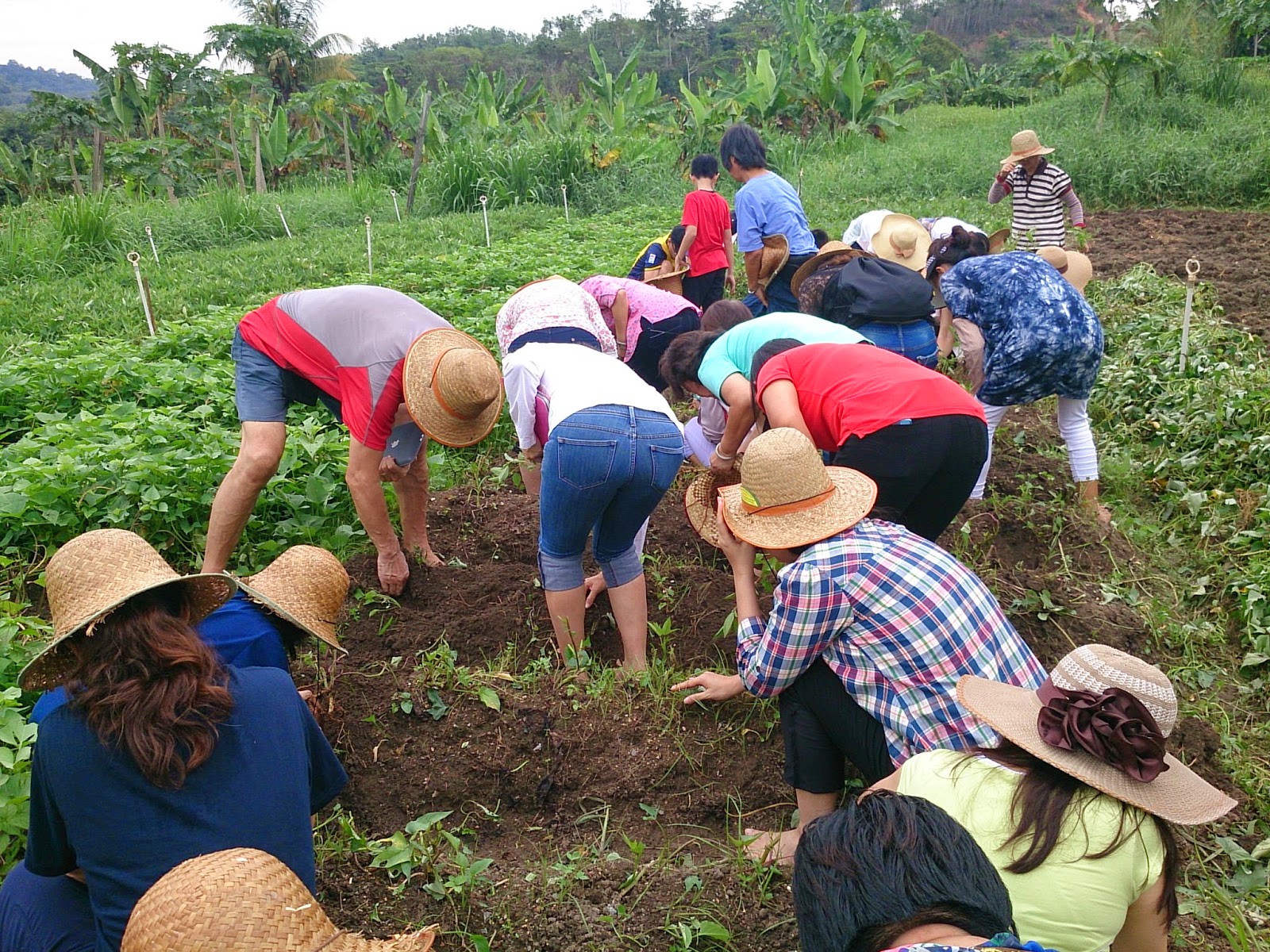 |
A vegan dish
without mock meat
is appealing for it's natural colours |
The Pro’s and Con’s of mock meat
have been much discussed
but
there is never a satisfactory conclusion.
There are opinions that
mock meats can be a tool
to
encourage people eat less meat,
as mock meat could serve as a replacement.
Also, for
veg beginners,
mock meat can also be a transition phase to
gradually
accustom their taste buds to purely plant based food.
However,
there are also perceptions that
mock meat is afterall
a type of processed food,
hence it is not good for digestion,
and may even be
infested with additives and flavor enhancers,
deterring health in long term.
Also, there are claims that
mock meat are always given the animal names,
which
do not quite help one nurture compassion.
The arguments above have their own basis.
It seems truly
difficult to conclude
whether mock meat is an angel or a devil.
But one thing
for sure,
from the nutrition perspective,
mock meat has not any point to defend
for.
Mock meat manufacturers generally would
protest in such a
way that
their mock meats are made of
soy proteins, plant fibres, konjac and
mushroom stems,
hence much healthier and less fattening than
conventional
gluten-based mock meat.
However, the manufacturing of mock meat
often deploys
techniques like
dehydration, deep frying, demineralization to preserve the
products.
Otherwise, high concentration of sugar, salt, alkaline and acids
will
be used.
All these processing leads to mineral and vitamins depletion,
rendering
serious loss of life force in food.
Ingestion of such products will cause
burden to the digestive systems.
Furthermore,
some manufacturers who are less health
conscious,
may even add in MSG, colourings and chemicals
to mock the flavor and
aroma of meat and seafood.
This inevitably causes more health damage.
One of the reasons why mock meat is popular nowadays,
is due
to the fact that
mock meat can help veg eateries to reduce cost.
Mock meat
could be stored in freezer for more than a year,
hence the food material
wastage is minimized.
Conversely, because fresh produce generally can only last
3-7 days,
every week a lot of leftover or unfresh materials
have to be thrown
away,
in turn elevating the overall cost.
Wherever vegetarianism is not
popular,
and the demand for vegetarian food is low,
it is inevitable to see
vegetarian eateries
deploying mock meat to ensure survival.
Some vegetarian eateries perceive that
mock meat could
attract more people consume vegetarian food,
since most of the public love
meat.
From religious point of view,
this may attract good merits
as the
vegetarian eateries operators may claim.
While the intention is good,
this
method of promoting vegetarianism is
as good as putting public on unhealthy
fast food.
Vegetarian eateries need to understand the implications well.
In fact, a lot of people avoid vegetarian
due to the abuse of mock meat.
From
this perspective,
it turns out that mock meat tarnishes the image of
vegetarianism,
and consequently hinders the outreach of vegetarianism to the
public.
To convince a non-veg to consume vegetarian food,
does not need
to depend on
whether the vegetarian food taste like meat.
Instead,
proper education should be offered to non-veg,
explaining that compared from meat diet,
vegetarian diet could cleanse our blood better,
improve our physical
wellbeing,
bring about brain clarity,
stable emotion,
and eventually supporting
successful career and holistic lifestyle.
Vegetarian eateries’ dilemma in using mock meat
is not unresolvable.
The solution lies in the wisdom of vegetarian community,
where veg
consumers have to continuously provide
positive feedbacks on natural vegetarian
items and
strictly refuse mock meat
(for the sake of own’s health and the
positive image of veg community).
When the demand of the veg community changes,
the supply will also ‘naturally’ change.
The course of eliminating mock meat
is likened to a
revolution.
Sacrifice is inevitable.
Here, sacrifice means that
veg eateries
may face higher operating cost, reduced profits;
veg consumers are likely to
pay a higher premium for natural foods.
Both parties, have to sacrifice
willfully,
so as to share the effort of restructuring dietetic health and
reinstating food ethics of our society.
Veg consumers who are well off may offer more support;
those who have restricted budget may consider
eating at home more, to reduce
living cost.
Whereas, those who are unable to pay for natural food,
should not
complain about higher natural food cost,
but should instead praise the
courageous veg eateries for their sacrifices.
This way, there will be hope for
improvement of vegetarian culture in our society!
By good will,
Kee Yew
pureland2012-at-gmail.com
{Learning Holistic Wellness for Wisdom and Compassion}













